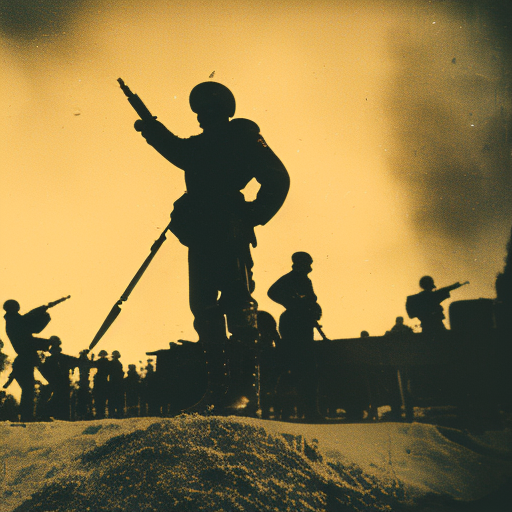Summary:
The Polish-Soviet War was a conflict that took place between Poland and Soviet Russia from 1919 to 1921. It was a result of territorial disputes and ideological differences between the two countries. The war ended with the signing of the Treaty of Riga, which established the eastern border of Poland and recognized its independence.
Background:
After World War I, Poland regained its independence after more than a century of foreign rule. However, its borders were not clearly defined, and it faced territorial disputes with its neighbors, including Soviet Russia. The Soviet government sought to spread communism and establish a buffer zone of friendly states along its western border. Poland, on the other hand, aimed to expand its territory and protect its independence.
Course of the War:
The war began in February 1919 when Polish forces launched an offensive against Soviet Russia. Initially, the Poles achieved significant victories, capturing several cities and pushing deep into Russian territory. However, the tide turned in 1920 when the Red Army launched a counteroffensive and pushed the Polish forces back.
The Battle of Warsaw, fought in August 1920, was a turning point in the war. The Polish army, led by Marshal Józef Piłsudski, successfully defended the capital against the Soviet forces. This victory halted the Soviet advance and allowed the Poles to regain the initiative. Polish forces then launched a counteroffensive, pushing the Red Army back and reclaiming lost territories.
Treaty of Riga:
The war came to an end with the signing of the Treaty of Riga on March 18, 1921. The treaty established the eastern border of Poland, which included large parts of Belarus and Ukraine. It also recognized the independence of Poland and Soviet Russia. Both sides made territorial concessions, with Poland gaining significant territory in the east.
Consequences:
The Polish-Soviet War had significant consequences for both countries and the wider region. Poland’s victory ensured its independence and allowed it to consolidate its borders. The war also weakened the Soviet government’s attempts to spread communism westward. It demonstrated the limitations of the Red Army and highlighted the need for military reforms.
Internationally, the war had mixed consequences. Some countries, such as France, supported Poland and saw it as a bulwark against Soviet expansion. Others, including Germany and the Soviet Union, were critical of Poland’s territorial gains. The war also strained relations between Poland and its neighbors, leading to ongoing tensions in the region.
Legacy:
The Polish-Soviet War had a lasting impact on Polish and Soviet history. In Poland, the war is remembered as a heroic struggle for independence and is seen as a defining moment in the country’s history. It also shaped Poland’s foreign policy, with a focus on maintaining strong defense capabilities.
In the Soviet Union, the war was downplayed and overshadowed by the Russian Civil War and the subsequent establishment of the Soviet state. However, it served as a lesson for the Red Army, leading to military reforms and a reevaluation of Soviet foreign policy.
Overall, the Polish-Soviet War was a complex conflict with far-reaching consequences. It highlighted the tensions between Poland and Soviet Russia, shaped the borders of Eastern Europe, and had a lasting impact on the region’s history.












